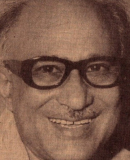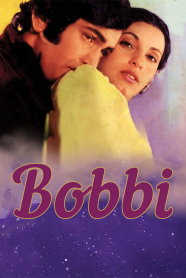
Khwaja Ahmad Abbas
Khwaja Ahmad Abbas
Screenwriter
Khwaja Ahmad Abbas (7 June 1914 – 1 June 1987), popularly known as K. A. Abbas, was an Indian film director, screenwriter, novelist, and a journalist in the Urdu, Hindi and English languages. He won four National Film Awards in India. As a director and screenwriter, Khwaja Ahmad Abbas is considered one of the pioneers of Indian parallel or neo-realistic cinema, and as a screenwriter he is also known for writing Raj Kapoor's best films. As a director, he made a number of important Hindi-Urdu films. Dharti Ke Lal (1946), about the Bengal famine of 1943, was one of Indian cinema's first social-realist films, and opened up the overseas market for Indian films in the Soviet Union. Pardesi (1957) was nominated for the Palme d'Or at the Cannes Film Festival. Shehar Aur Sapna (1963) won the National Film Award for Best Feature Film, while Saat Hindustani (1969) and Do Boond Pani (1972) both won the National Film Awards for Best Feature Film on National Integration. As a screenwriter, he penned a number of neo-realistic films, such as Dharti Ke Lal (which he directed), Neecha Nagar (1946) which won the Palme d'Or at the first Cannes Film Festival, Naya Sansar (1941), Jagte Raho (1956), and Saat Hindustani (which he also directed). He is also known for writing the best of Raj Kapoor's films, including the Palme d'Or nominated Awaara (1951), as well as Shree 420 (1955), Mera Naam Joker (1970), Bobby (1973) and Henna (1991).His column ‘Last Page’ holds the distinction of being one of the longest-running columns in the history of Indian journalism. The column began in 1935, in The Bombay Chronicle, and moved to the Blitz after the Chronicle's closure, where it continued until his death in 1987. He was awarded the Padma Shri by the Government of India in 1969.
For more information press the link below:
https://en.wikipedia.org/wiki/Khwaja_Ahmad_Abbas
